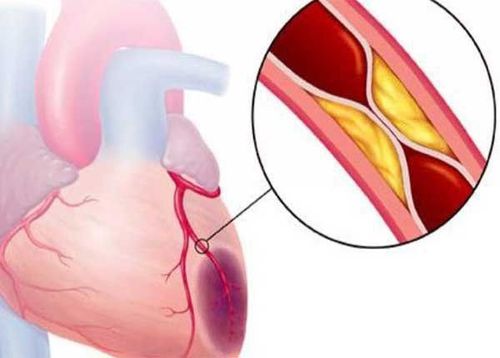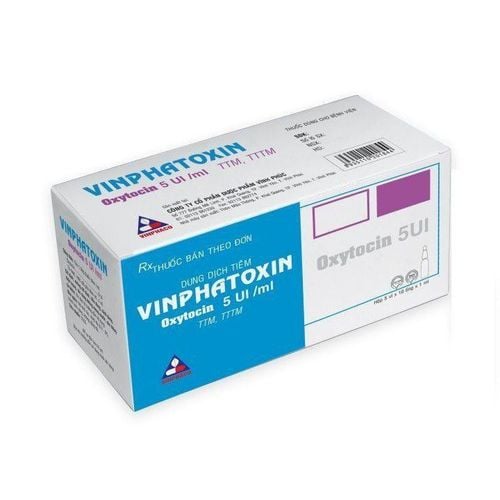This is an automatically translated article.
Nicardipine 10mg/10ml is formulated as an intravenous syringe for the treatment of arterial aneurysms, malignant arterial hypertension or pre-eclampsia syndrome. So to find out what is Nicardipine 10mg/10ml? The following article will help you better understand the uses of Nicardipine 10mg/10ml.
1. What are the uses of Nicardipine 10mg/10ml?
1.1. What is Nicardipine 10mg/10ml? Nicardipine 10mg/10ml Aguettant is a drug used to treat high blood pressure, manufactured and distributed worldwide by Laboratoire Aguettant - France. Nicardipine 10mg/10ml Aguettant will give the treatment an immediate effect, through which it immediately relieves the symptoms caused by high blood pressure, and especially the angina attacks.
Each tube of Nicardipine Aguettant 10mg/10ml has the main ingredient Nicardipine.HCl with 10mg content and excipients just enough for 1 syringe of 10ml.
Nicardipine belongs to the group of cardiovascular drugs. It is prepared in the form of a solution for intravenous infusion.
1.2. What are the uses of Nicardipine 10mg/10ml? The drug nicardipine with the active ingredient is Nicardipine, each ampoule of Nicardipine Aguettant injection solution has all the physicochemical properties of this substance. Nicardipine: is considered as the leading drug to treat high blood pressure with an excellent mechanism of preventing the influx of calcium ions into cells. Treatment of hypertension in emergencies, especially in the following cases:
Malignant arterial hypertension. Encephalopathy due to blood pressure. Aortic occlusion, in cases where short-acting beta-blockers cannot be used, or in combination with beta-blockers alone do not give the desired effect. Preeclampsia syndrome when other intravenous antihypertensive agents are contraindicated or not recommended. Treatment of hypertension after surgery.
2. Usage of Nicardipine 10mg/10ml blood pressure medicine
2.1. How to take Nicardipine 10mg/10ml The drug nicardipine is administered through a continuous intravenous line and monitored by specialists. During the infusion, the patient's blood pressure must be continuously monitored.
2.2. Dosage of Nicardipine 10mg/10ml Adults:
First dose : Treatment should be started with a continuous infusion of nicardipine at a rate of 3-5 mg per hour for 15 minutes. The infusion rate can be increased in increments of 0.5 or 1 mg every 15 minutes. The intravenous infusion rate should not exceed 15 mg per hour. Maintenance dose: Once target blood pressure has been achieved, the dose should be gradually reduced, usually to about 2 to 4 mg per hour, to maintain therapeutic efficacy. Switch to an existing oral antihypertensive: discontinue nicardipine or reduce dose when initiating concomitant therapy with an appropriate oral agent. May switch to oral therapy with nicardipine 20 mg tablets at 60 mg/day in 3 divided doses, or nicardipine 50 mg extended-release tablets at 100 mg/day in 2 divided doses.
Elderly patients:
The elderly may be more sensitive to the effects of nicardipine because of decreased kidney or liver function. Continuous intravenous nicardipine should be started at 1 to 5 mg/hour, depending on blood pressure and clinical condition. After 30 minutes, depending on the observed effect, the infusion rate can be increased or decreased in increments of 0.5 mg/hour. The intravenous infusion rate should not exceed 15 mg/hour. Pregnant women:
Nicardipine should be administered as a continuous intravenous infusion at an initial rate of 1 to 5 mg/hour depending on blood pressure and clinical condition. After 30 minutes, depending on the observed effect, the infusion rate can be increased or decreased in increments of 0.5 mg/hour. In the treatment of preeclampsia, the dose usually does not exceed 4 mg/hour. The maximum rate should not exceed 15 mg/hour. (See Special Warnings and Precautions, Pregnancy and Lactation and Adverse Reactions) Hepatic impairment: Nicardipine should be used with caution in these patients. Nicardipine is a drug that is metabolised in the liver and should be dosed according to the recommended regimen for elderly patients with hepatic impairment or with reduced hepatic blood flow.
Renal impairment: Caution should be exercised when nicardipine is used in these patients. In some patients with moderate renal impairment, significantly lower systemic clearance and higher AUC were observed. Therefore, the dosage regimen recommended for elderly patients with renal impairment should be administered according to the recommended regimen.
Children:
Initial dose: In emergencies, the recommended initial dose is 0.5 to 5 mcg/kg/min
Maintenance dose: The recommended maintenance dose is 1 to 4 mcg/kg /minute.
Use caution when administering nicardipine in children with renal impairment. In this case, only the lowest effective dose should be used.
Handling when missed dose:
absolutely do not forget dose because it will affect the effectiveness of treatment. If you miss a dose, skip the missed dose and do not overlap the next dose.
Treatment of overdose:
Nicardipine is a derivative of dihydropyridine, it can cause severe edema. Overdose can cause peripheral vasodilatation, reducing blood pressure with reflex tachycardia. Possible bradycardia, bradycardia and congestive heart failure.
Handle in case of emergency or overdose.
When detecting abnormal symptoms, the patient should immediately stop using the drug and treat symptoms. Early gastric lavage is required if severe abnormalities are present.
3. Contraindications of Nicardipine 10mg/10ml
3.1. Contraindications: Hypersensitivity to some of the ingredients in the drug. Severe aortic valve stenosis. Unstable angina. Within about 8 days after a heart attack. Increases the effect of reducing myocardial contractility. Nicardipine is a drug that may potentiate the inotropic effects of beta-blockers and lead to heart failure in patients with underlying or uncontrolled heart failure.
Nicardipine + cyclosporin, tacrolimus or sirolimus Protein-Bound resulted in increased cyclosporin/tacrolimus concentrations.
Nicardipine increases digoxin levels.
Nicardipine + intravenous corticosteroids and tetracosactide (except hydrocortisone used as an alternative in Addison's disease) may lead to decreased antihypertensive effect.
Nicardipine + inhaled anesthetic → can cause additive or synergistic hypotensive effects, the anesthetic also inhibits the increase in heart rate due to baroreceptor reflex associated with peripheral vasodilators.
Competitive neuromuscular blocking agents: Like other calcium channel blockers, increases neuromuscular blockade.
Pregnant women:
Limited pharmacokinetic data indicate that intravenous nicardipine does not accumulate; The drug rarely crosses the placental barrier. In clinical practice, use of nicardipine during the first 6 months of pregnancy in a small number of pregnancies has not so far demonstrated any special effects on teratogenicity or fetotoxicity. Use of nicardipine for the treatment of severe preeclampsia during the third trimester of pregnancy may have the potential to induce uterine contractions that may interfere with spontaneous labour. Breastfeeding:
Nicardipine and its metabolites are excreted in human milk at very low concentrations. Not enough information is available on the effects of nicardipine in neonates/breastfeeding infants. Nicardipine should not be used during breastfeeding.
4. Note when taking Nicardipine 10mg/10ml
Patients with heart failure Patients with ischemic cardiovascular disease Pregnant women Patients with a history of liver dysfunction or liver failure. Patients with portal hypertension Patients with pre-existing raised intracranial pressure Patients with cerebrovascular accident Caution when combined with beta-blockers Injection site reactions Children
5. Nicardipine 10mg/10ml side effects
Due to excessive calcium inhibition causes slower heart rate, atrioventricular block, no systole, congestive heart failure, possibly cardiac arrest. Excessive vasodilation: hypotension, flushing, peripheral edema, pulmonary edema. Causes reflex tachycardia: possible dizziness. Gastrointestinal disturbances: vomiting, constipation or diarrhea.
Please dial HOTLINE for more information or register for an appointment HERE. Download MyVinmec app to make appointments faster and to manage your bookings easily.













